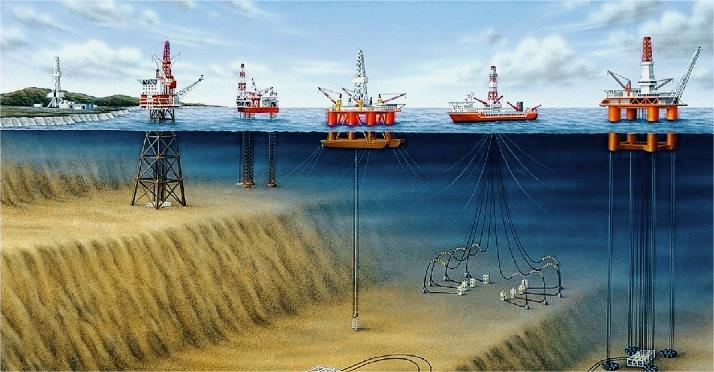What are Key Strategies for Offshore Oil Rig Work
Offshore oil rig work presents a unique blend of financial rewards and challenges, underscored by the need to navigate a remote and demanding environment. This article provides a comprehensive exploration of the multifaceted risks associated with offshore oil rig employment and outlines strategies to effectively manage and mitigate these challenges.

Main Risks of Offshore Oil Rig Work
1. Environmental Challenges:
Offshore oil rigs operate in harsh and unpredictable environments, subjecting workers to extreme weather conditions and slippery surfaces.
The risk of falling overboard due to challenging sea conditions necessitates strict adherence to safety protocols and personal protective equipment.
2. Health and Safety Hazards:
The complex machinery, high-pressure systems, and handling of flammable materials pose various health and safety risks, including slips, trips, falls, and more severe threats like oil explosions and chemical exposure.
Rig employees undergo rigorous training to adhere to strict safety protocols and utilize personal protective equipment effectively.
3. Emergency Situations:
Offshore oil rigs are equipped with safety measures and emergency response plans to address contingencies, though isolation challenges may hinder prompt responses to critical incidents.
Workers must be well-versed in emergency procedures, evacuation protocols, and the use of safety equipment.
4. Limited Medical Facilities:
While offshore rigs have medical facilities and trained personnel, the distance from comprehensive medical care poses challenges in cases of severe injuries or illnesses.
Remote locations may impede timely access to advanced medical facilities, potentially impacting the outcome of medical emergencies.
5. Transportation Risks:
Transporting workers via helicopters or boats carries inherent risks, including accidents during take-off and landing and challenges posed by rough seas.
Rig workers undergo specialized training to mitigate transportation risks and ensure safe travel to and from offshore platforms.

Safety Measures for Offshore Oil Rig Work
To mitigate risks and ensure the safety of workers, offshore oil rig operations implement a range of safety measures, including:
Personal Protective Equipment (PPE) such as hard hats, safety glasses, ear protection, flame-resistant clothing, and steel-toed boots.
Fall prevention measures including guardrails, safety nets, and fall arrest systems.
Well-defined emergency response plans, regular drills, and training for all personnel.
Fire safety protocols including fire-resistant materials, firefighting equipment, and regular fire drills.
Confined space entry protocols, hazardous materials handling procedures, and safe lifting and handling practices.
Regular maintenance and inspection of tools and equipment, along with proper usage and storage procedures.
Simulation Technology in Offshore Oil Rig Operations
Oil and gas simulation technology plays a crucial role in enhancing safety, efficiency, and environmental protection in offshore rig operations by:

Providing a controlled environment for training and skill development without exposure to real risks.
Improving operational efficiency through hands-on experience with complex equipment and procedures.
Supporting environmental protection efforts through oil spill response training and environmental monitoring simulations.
Facilitating cost reduction, technology integration, research and development, risk assessment, and operational flexibility.
Conclusion
While working on an offshore oil rig presents inherent risks, rigorous safety measures, ongoing training, and a commitment to continuous improvement are paramount to mitigating these challenges. The oil industry recognizes the importance of prioritizing safety and sustainability to protect the well-being of its workforce and the environment, ensuring a safer and more efficient future for offshore oil rig work.
- Art
- Causes
- Crafts
- Dance
- Drinks
- Film
- Fitness
- Food
- Juegos
- Gardening
- Health
- Inicio
- Literature
- Music
- Networking
- Otro
- Party
- Religion
- Shopping
- Sports
- Theater
- Wellness


